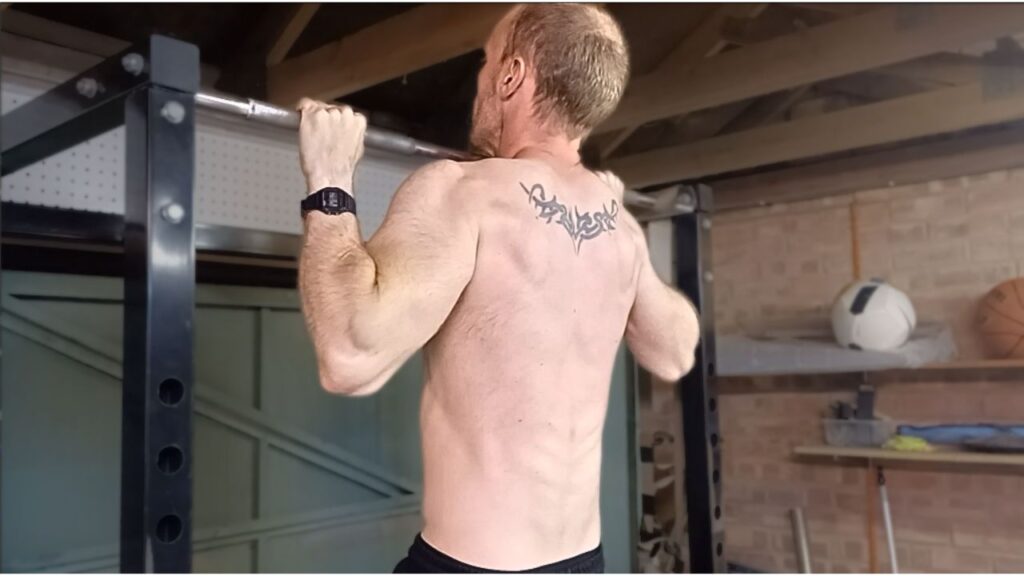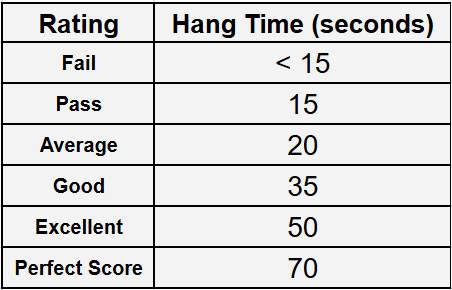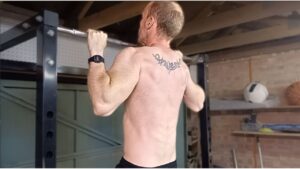While pull ups are a popular exercise for assessing upper body strength, not everyone is capable of doing them. Holding the top position of a pull up, known as a flexed arm hang, is a suitable alternative for women.
How to Perform The Flexed Arm Hang Test
For the test itself, the goal is to hold the top position of a pull up for as many seconds as possible. The set up would be as follows:
- Find a secure, horizontal overhead bar that can support your body-weight
- Grip the bar with an overhand grip (palms facing away from you), hands slightly greater than shoulder width apart
- Use a stable implement, such as an exercise bench or the rack itself, to step on and raise yourself up so your chin is above the bar
- Take the strain of your body and release your legs from their support
- Hold the top position for as long as possible

As the test is a hold for time, it would help to have a partner available with a stopwatch. Alternatively, either have a stopwatch or clock visible while you hang, or film yourself and determine the hang time when playing it back.
Warm Up
As the flexed arm hang is an isometric movement, meaning it’s holding a fixed position, injury risk is low. However, it is generally recommended to complete a warm up prior to any maximal effort test.
Below you will find a video of a pull up warm up adapted from a program called 7 Weeks to 50 Pull ups. This can be completed prior to your flexed arm hang test. It’s approximately 8 minutes long and can be followed in real time.
What Do My Results Mean?
Here is the scoring system for female Royal Marines when it comes to the flexed arm hang, where it is part of the assessment of female recruits.

For the general population there is very little information available. However, a table from the Presidents Challenge shows that the 50th percentile for adult females is 7 seconds, with the 10th percentile at 1 second and the 90th percentile at 29 seconds. From there you could infer that a “Good” score is above 15 seconds and a “Poor” score might be 4 seconds or less.
Tracking Over Time
For most individuals, an upper body test like this can be completed once a year. There are a set of “essential” tests I believe everyone should be tracking each year, and I do not consider this to be essential. However, it is a good indication of overall upper body function and therefore has some value over time.
My wife has completed this at the age of 32 and 33, scoring 13 seconds and 11 seconds respectively.

